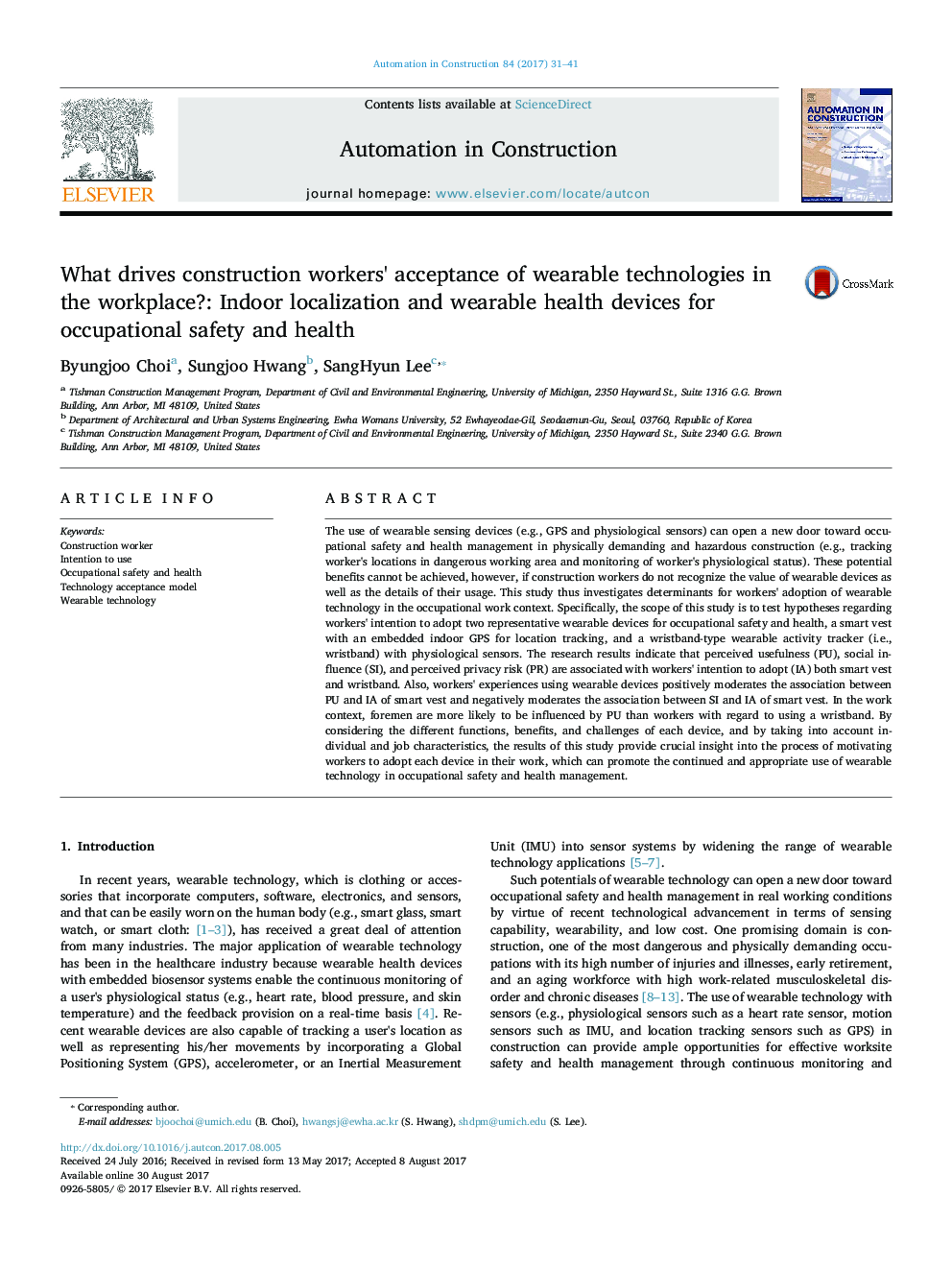| کد مقاله | کد نشریه | سال انتشار | مقاله انگلیسی | نسخه تمام متن |
|---|---|---|---|---|
| 6479055 | 1428279 | 2017 | 11 صفحه PDF | دانلود رایگان |
- The research model on construction workers' wearable device adoption is developed.
- A smart vest and wristband are selected as the representative wearable devices.
- The model extends the TAM by adding four independent and two moderating variables.
- The research hypotheses are tested with data collected from 120 construction workers.
- This study broadens understandings of construction workers' wearable device adoption.
The use of wearable sensing devices (e.g., GPS and physiological sensors) can open a new door toward occupational safety and health management in physically demanding and hazardous construction (e.g., tracking worker's locations in dangerous working area and monitoring of worker's physiological status). These potential benefits cannot be achieved, however, if construction workers do not recognize the value of wearable devices as well as the details of their usage. This study thus investigates determinants for workers' adoption of wearable technology in the occupational work context. Specifically, the scope of this study is to test hypotheses regarding workers' intention to adopt two representative wearable devices for occupational safety and health, a smart vest with an embedded indoor GPS for location tracking, and a wristband-type wearable activity tracker (i.e., wristband) with physiological sensors. The research results indicate that perceived usefulness (PU), social influence (SI), and perceived privacy risk (PR) are associated with workers' intention to adopt (IA) both smart vest and wristband. Also, workers' experiences using wearable devices positively moderates the association between PU and IA of smart vest and negatively moderates the association between SI and IA of smart vest. In the work context, foremen are more likely to be influenced by PU than workers with regard to using a wristband. By considering the different functions, benefits, and challenges of each device, and by taking into account individual and job characteristics, the results of this study provide crucial insight into the process of motivating workers to adopt each device in their work, which can promote the continued and appropriate use of wearable technology in occupational safety and health management.
220
Journal: Automation in Construction - Volume 84, December 2017, Pages 31-41
